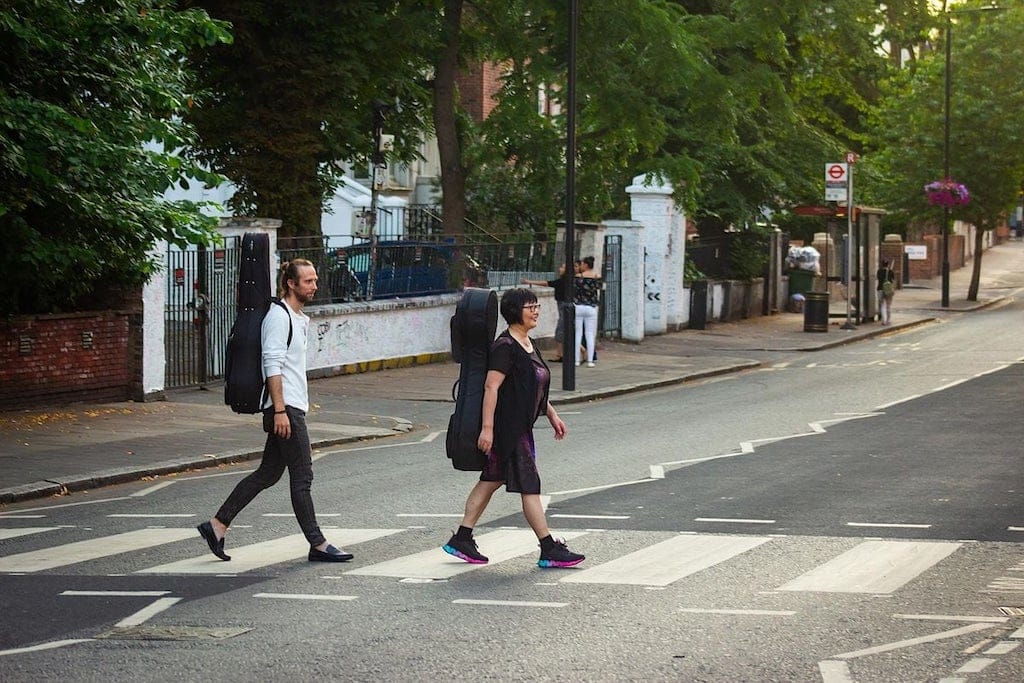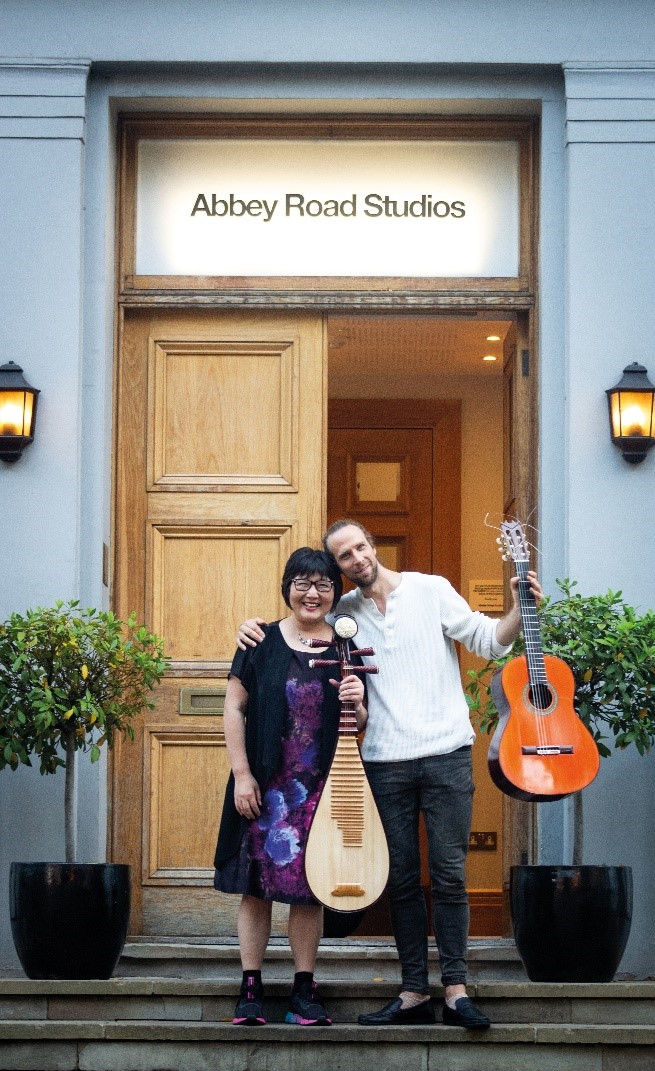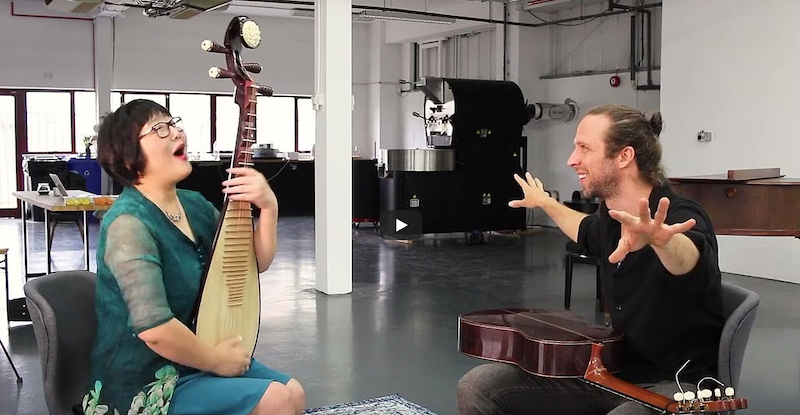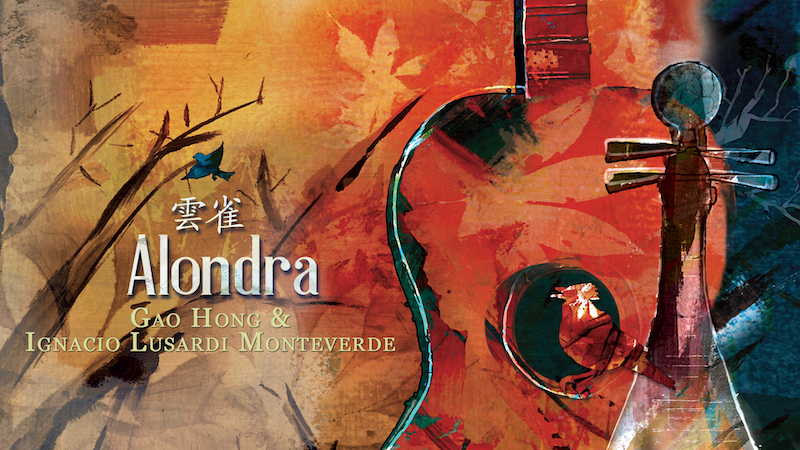Pipa Meets Flamenco Guitar

Chinese Pipa Master Gao Hong and Flamenco guitarist Ignacio Lusardi Monteverde announce their upcoming album “Alondra,” releasing globally on February 23rd, 2024. Inspired by the Skylark’s intricate melodies, this unique musical journey intertwines Pipa and Flamenco, transcending cultural boundaries.
The duo’s first single, “Skylark Calls,” mirrors the bird’s song, creating an intricate melody that defies genre norms. Alondra is more than an album; it’s an exploration of shared experiences, celebrating the magic that happens when diverse talents converge.
In an exclusive interview, Gao Hong shares insights into the collaborative process, the challenges of blending Pipa and Flamenco, and the joy of creating something beyond individual imaginations.

Serenade Team: What inspired the collaboration between a Chinese Pipa master and a renowned Flamenco guitarist for “Alondra”? How did the idea for this album come about?
Gao Hong: Ignacio and I met for the first time via Zoom three days before we were scheduled to record our album, Alondra, at Abbey Road Studios in London. ARC Music had offered me a choice of several outstanding musicians from all over the world to work with. Since I had never worked with a flamenco guitarist before, I felt this would be the biggest challenge for me, and I love to take risks.
ST: Given the diverse musical backgrounds you both bring to the table, how did you navigate blending Pipa and Flamenco styles to create something unique and cohesive in “Alondra”?
GH: I always believe that music has no boundaries. My concept for such collaborations is to blend each other’s music together. I want the music we create to bring people together. On this album, our music is not specifically from China or Argentina; instead, it combines elements and musical languages from both of our roots into a new, one-of-a-kind musical expression.
ST: Could you share a memorable moment or experience during the recording process at Abbey Road studio that significantly influenced the direction or sound of the album?
GH: My most memorable moment was when we improvised parts for “Impression of Ronda.” We had a great musical ‘conversation’ even though we hadn’t discussed anything before we recorded the piece. I felt that was a great example of how music can connect people and break down barriers.

ST: “Alondra” draws parallels between the Skylark’s song and the creative process. Can you elaborate on how the natural world, particularly the Skylark, influenced the themes or mood of this album?
GH: As the liner notes stated: “we want to take risks together and fly high to look for other parts of the world where we can explore new and fresh ideas.” Ignacio creates the perfect groove that allows me to soar above and between the notes he plays, as if I were a bird or a butterfly. It’s a perfect match for the Pipa’s unique tremolo technique known as lunzhi that allows players to sustain notes for any length of time and weave in and out of what the other musicians are playing. Chinese poet Bai Juyi (722-846) described the sound made by lunzhi as being similar to “pearls falling onto a jade plate.” This, combined with a multitude of other pipa techniques, allows players to imitate natural sounds like squabbling geese, blowing wind and flowing water, and depict the serenity of undisturbed natural landscapes and habitats.
ST: Collaboration often involves a harmonious blend of different perspectives. How did your personal experiences and cultural backgrounds influence the storytelling and emotions conveyed through the music in “Alondra”?
GH: I have played with top musicians from many countries and genres, learning not only about their approaches to music but also the beauty of their cultures and lifestyles. I like to integrate what I learn into my pipa techniques, mixing our music while preserving my Pipa identity.
ST: Could you discuss a specific track from the album that holds particular significance to both of you, either in terms of its creation or the emotions it encapsulates?
GH: For me, though every track is dear to my heart, I was especially captivated with Skylark Call. It was our first track to record at Abbey Road Studios, marking our initial collaboration. The music style is vastly different from traditional Chinese music, making it thrilling to find my place and discover how my Pipa could best fit with Ignacio’s Flamenco guitar style.

ST: Having previously collaborated with musicians from various genres, how did your past collaborations influence the creative process for “Alondra”?
GH: My first fusion duo collaboration in 1997 with sitarist Shubhendra Rao, a top disciple of Ravi Shankar, was challenging initially. However, after overcoming those challenges, I gained the confidence to take the risk of playing with Ignacio. In a single day, I had to discover how the Pipa fit with Flamenco guitar and record an entire album at an iconic recording studio.
ST: In what ways do you believe the fusion of seemingly distinct musical genres in “Alondra” exemplifies the power of collaborative artistry and the magic that unfolds when diverse talents converge?
GH: I believe we both played to the strengths of our own music while opening our hearts and minds to each other, creating something that had never been done before. The strong rhythms of Flamenco and the beautiful melodies of Chinese music mixed together perfectly, showcasing the power of collaborative artistry and the magic that unfolds when diverse talents converge.





